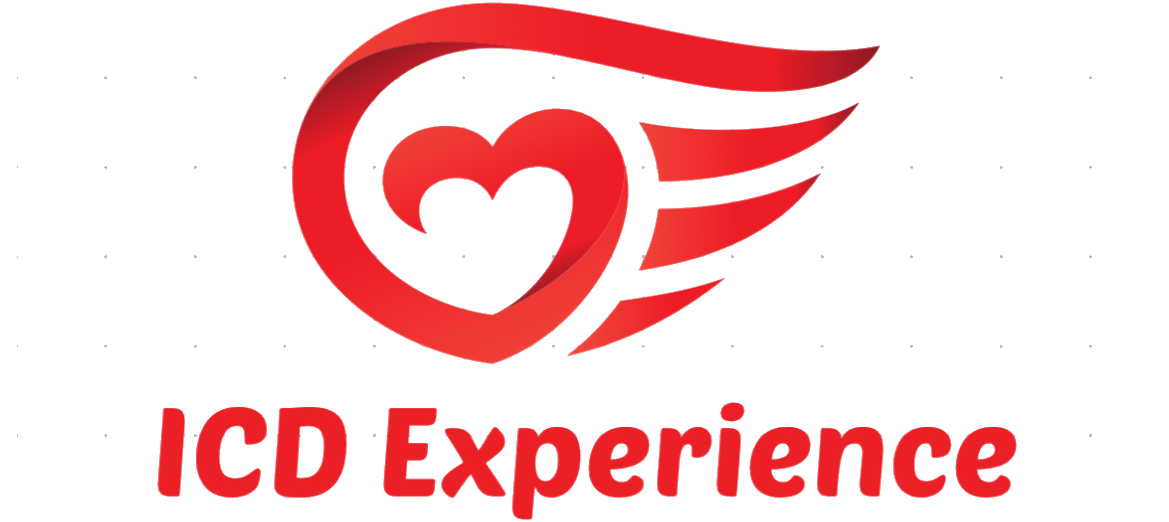Living with an implantable cardioverter-defibrillator (ICD) doesn’t mean pressing pause on your life—or your fitness. As someone who’s had an ICD since 2022, I understand the uncertainty that can come with movement, workouts, and pushing yourself again. But trust me—safe exercises with an ICD are not only possible, they’re essential. In this guide, I’ll walk you through what’s safe, what to avoid, and how you can start feeling stronger both physically and emotionally. Whether you’re newly implanted or years into your ICD journey, movement is a powerful way to reclaim control, rebuild strength, and reduce fear.
Understanding Your ICD Before You Exercise
An ICD is a small but powerful device implanted in your chest to help monitor and correct dangerous heart rhythms. Many of us have one due to arrhythmias or heart failure, and staying active is often part of managing those conditions.
Knowing how your ICD works gives you the confidence to move without fear. It monitors your heart rhythm and delivers a shock only when needed, not during normal activity. With the right precautions, exercise won’t interfere with its function. For more in-depth understanding, read our Living with an ICD guide. Knowing how it works is key to eliminating anxiety around exercise.
Step One: Talk to Your Doctor First
Before jumping into any fitness routine, talk to your cardiologist or electrophysiologist. Everyone’s condition is different, and your doctor will help tailor your plan based on your heart condition, medications, and ICD model. They’ll likely recommend a gradual approach and may suggest a stress test or cardiac rehab.
If you’re not sure how to approach that conversation, the Mayo Clinic offers helpful suggestions on preparing for doctor visits. This is a step you never want to skip—it’s your safety net.
Safe Exercises for ICD Patients
Walking
One of the best and safest entry points. Walking is low-impact and can be done anywhere. Start with 10–15 minutes and gradually build up. Use it not just for fitness, but for reflection and mental reset.
Stationary or Outdoor Cycling
Cycling strengthens the heart and improves endurance. Begin on flat terrain or a stationary bike. Avoid high resistance and steep hills at first. Use a heart monitor to track exertion.
Swimming
Swimming is gentle on joints and strengthens multiple muscle groups. However, make sure your incision is fully healed and you’ve gotten your cardiologist’s approval. Avoid cold water and swim in supervised environments if possible.
Yoga
Yoga combines body awareness, flexibility, and breathing. It also reduces stress and can help you reconnect with your body post-surgery. Avoid intense or inverted poses, and let your instructor know about your ICD.
Strength Training
Resistance exercises maintain muscle mass and protect bone health. Stick with light weights and high reps. Avoid heavy lifting above the head or anything that strains the upper chest area where your ICD is implanted.
Low-Impact Aerobics
Dance classes or water aerobics offer a fun and safe way to get your heart pumping. Always inform instructors about your ICD so they can offer modifications if needed.
Stretching
A stretching routine improves flexibility and reduces muscle tension. It also enhances blood circulation. Stretch major muscle groups, especially after walking or strength training.
Tips for Exercising Safely with an ICD
- Monitor your heart rate: Use a wearable device to stay in your target heart rate zone. Ask your cardiologist what your maximum heart rate should be.
- Hydrate: Dehydration increases heart strain. Drink water before, during, and after any physical activity. Here’s why hydration matters.
- Listen to your body: Stop immediately if you feel dizzy, short of breath, or unusually tired. Don’t push through discomfort.
- Warm up and cool down: Never jump into a workout cold. Begin with 5–10 minutes of light activity and stretching, and finish your session gradually.
- Avoid high-impact sports: Contact sports like football or martial arts can dislodge the ICD or cause trauma to the chest.
The Mental Health Benefits of Movement
Exercise can be one of your most powerful tools against anxiety and depression. Many ICD patients, including myself, experience fear—especially early on. Physical activity releases endorphins, reduces stress hormones, and provides a sense of control that can be deeply healing.
I’ve found that even a 20-minute walk can shift my mood. It’s not just about the body—it’s about rebuilding trust in yourself. For more information, check out the National Institute of Mental Health.
Build a Support System
The journey is easier with others. Whether you’re exercising with your spouse, a friend, or attending a cardiac rehab program, support reduces isolation.
Join forums or support groups for ICD patients. Share progress, ask questions, and get motivated by people who truly understand. Read our article on Supporting a Loved One with an ICD.
Make It Enjoyable
Consistency is easier when you enjoy the activity. Hate the treadmill? Try walking in a park. Not into weights? Consider yoga or tai chi. The key is to move your body in ways that bring joy, not dread.
Use Technology to Stay on Track
Fitness trackers, heart rate monitors, and mobile apps help keep your routine safe and on schedule. Some even alert you when your heart rate is too high or if you’re overexerting. They’re also great for tracking progress over time.
Plan for the Long Run
Set both short- and long-term goals. Maybe it’s walking 30 minutes a day, or cycling for 5 miles. Celebrate small milestones. Adjust goals as your fitness improves or your health changes.
Overcoming Common Barriers
Barriers like fear, lack of time, or motivation can slow you down. Address them head-on:
- Fear? Start slow and talk to your doctor regularly.
- No time? Fit movement into your day—take the stairs, stretch while watching TV.
- No motivation? Schedule workouts like appointments, or pair up with a friend.
Read: Building a Routine: Daily Life with an ICD.
Adapting for Seasonal Changes
Too cold outside? Try indoor walking at malls, yoga in your living room, or stationary biking. In hot weather, exercise early or in the evening, and hydrate more.
Nutrition: Fueling Your Body
Pair your workouts with a heart-healthy diet. Focus on:
- Leafy greens and colorful vegetables
- Whole grains like oats and brown rice
- Lean protein (chicken, fish, legumes)
- Healthy fats from nuts, seeds, and olive oil
Avoid processed foods, excessive salt, and added sugars. Proper nutrition boosts energy and helps muscle recovery.
Upcoming: Heart-Healthy Nutrition with an ICD.
Community Resources
Cardiac rehabilitation programs are goldmines. Supervised by professionals, they teach safe exercise and heart-health education. Other resources include:
- Local YMCAs
- Online ICD fitness communities
- Hospitals offering ICD-specific support groups
Working with Professionals
A certified trainer who understands cardiac limitations can help you customize a safe program. Just ensure they consult with your cardiologist. They’ll monitor intensity and modify exercises to keep you on track.
Staying Motivated Over Time
Tracking progress helps. Consider:
- A fitness journal
- Goal charts
- Using apps that gamify progress
- Rewarding yourself (non-food rewards!) when milestones are hit
Reflect on the Journey
Take a moment every few weeks to reflect. Look at how far you’ve come—not just physically, but emotionally. Movement helps rebuild trust in your body, and with time, that trust turns into confidence.
FAQ: Safe Exercises with an ICD
Can I lift weights with an ICD?
Yes, but with caution. Use light weights and avoid overhead or chest-heavy movements. Always consult your cardiologist before starting any strength training.
When can I start exercising post-surgery?
Most patients can start light exercise, like walking, within a few weeks after ICD implantation, but you must get clearance from your healthcare provider first
Can exercise trigger an ICD shock?
Not likely if you stay within your target heart rate zone and follow your cardiologist’s advice. Overexertion can increase risk, so gradual progress is key
What’s the best cardio for ICD patients?
Walking, stationary biking, low-impact aerobics, and swimming (after healing) are all safe cardiovascular exercises for individuals with ICDs.
Is it safe to swim with an ICD?
Yes, swimming is generally safe once your incision has healed and your doctor approves it. Avoid cold or unsupervised water environments initially.
Should I avoid certain sports with an ICD?
Yes. Avoid high-impact or contact sports like football or martial arts, which could cause trauma to the chest or dislodge the ICD.
Conclusion
You don’t have to choose between safety and staying active. With smart planning and the right support, exercising after ICD implantation can restore your confidence, strengthen your body, and uplift your spirit. As someone who’s been there—I promise: you’re stronger than you think.
Need more help understanding life with an ICD? Check out my book, Understanding ICD Implants: A Comprehensive Guide.













12 Comments
Your posts always give me new ideas. Thanks for the inspiration!